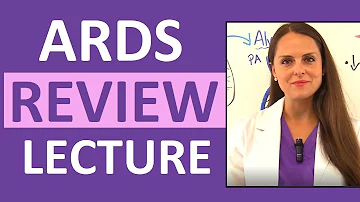
What is the most common cause of ARDS?

What is the most common cause of ARDS?
The most common cause of ARDS is sepsis, a serious and widespread infection of the bloodstream. Inhalation of harmful substances. Breathing high concentrations of smoke or chemical fumes can result in ARDS, as can inhaling (aspirating) vomit or near-drowning episodes. Severe pneumonia.
What are the chances of surviving ARDS?
Prognosis. The survival rate for patients with COVID-19 with ARDS is approximately 25%. Factors associated with increased mortality in patients with COVID-19 pneumonia included age ≥65 years, presence of cardiovascular or cerebrovascular disease, lymphopenia, and elevation in troponin I levels.
How do you detect ARDS?
There’s no specific test to identify ARDS. The diagnosis is based on the physical exam, chest X-ray and oxygen levels. It’s also important to rule out other diseases and conditions — for example, certain heart problems — that can produce similar symptoms.
How long does it take to recover from Covid ARDS?
It can take up to two years for people recovering from ARDS to regain lung function. A physical therapist can help patients maximize their lung capacity. Depression. It is common for people who survive ARDS to experience a period of depression.
Can u survive ARDS?
It is important to note that most people survive ARDS. They will not require oxygen on a long-term basis and will regain most of their lung function. Others will struggle with muscle weakness and may require re-hospitalization or pulmonary rehabilitation to regain their strength.
How long it takes to recover from ARDS?
Recovering from ARDS On average this is seven to 14 days. Beyond this time, doctors may suggest a tube be placed directly into the windpipe through the neck (tracheostomy) by a surgeon. Usually the doctor believes it may take weeks more to recover from ventilator support.
Is ARDS curable?
How Is ARDS Treated? There is no cure for ARDS at this time. Treatment focuses on supporting the patient while the lungs heal. The goal of supportive care is getting enough oxygen into the blood and delivered to your body to prevent damage and removing the injury that caused ARDS to develop.
Can lungs heal on a ventilator?
This is done only if your health care team believes that it would take longer than 2 weeks to remove you from the ventilator. A tracheostomy isn’t permanent and can easily be removed once you no longer need the ventilator. It’s important to note that even in people with severe lung damage, the lung can heal.
Can ARDS be seen on xray?
Chest radiograph findings of ARDS vary widely depending on the stage of the disease. The most common chest radiograph findings are bilateral, predominantly peripheral, somewhat asymmetrical consolidation with air bronchograms. Septal lines and pleural effusions, however, are uncommon.
What’s the longest you can stay on a ventilator?
How long does someone typically stay on a ventilator? Some people may need to be on a ventilator for a few hours, while others may require one, two, or three weeks. If a person needs to be on a ventilator for a longer period of time, a tracheostomy may be required.
What does Ards stand for?
- Acute respiratory distress syndrome (ARDS) occurs when fluid builds up in the tiny, elastic air sacs (alveoli) in your lungs. The fluid keeps your lungs from filling with enough air, which means less oxygen reaches your bloodstream. This deprives your organs of the oxygen they need to function.
What is Ards caused by?
- ARDS is primarily caused by damage to the tiny blood vessels in your lungs. Fluid from these vessels leaks into the air sacs of the lungs. These air sacs are where oxygen enters and carbon dioxide is removed from your blood. When these air sacs fill with fluid, less oxygen gets to your blood.
What are the stages of Ards?
- ARDS tend to progress through three relatively discrete pathologic stages (the exudative stage, proliferative stage, and fibrotic stage), the details of which are discussed separately. (See « Acute respiratory distress syndrome: Clinical features, diagnosis, and complications in adults », section on ‘Pathologic diagnosis and stages’ .)
How is Ards treated?
- The primary goal of ARDS treatment is to ensure a person has enough oxygen to prevent organ failure. A doctor may administer oxygen by mask. A mechanical ventilation machine can also be used to force air into the lungs and reduce fluid in the air sacs.

